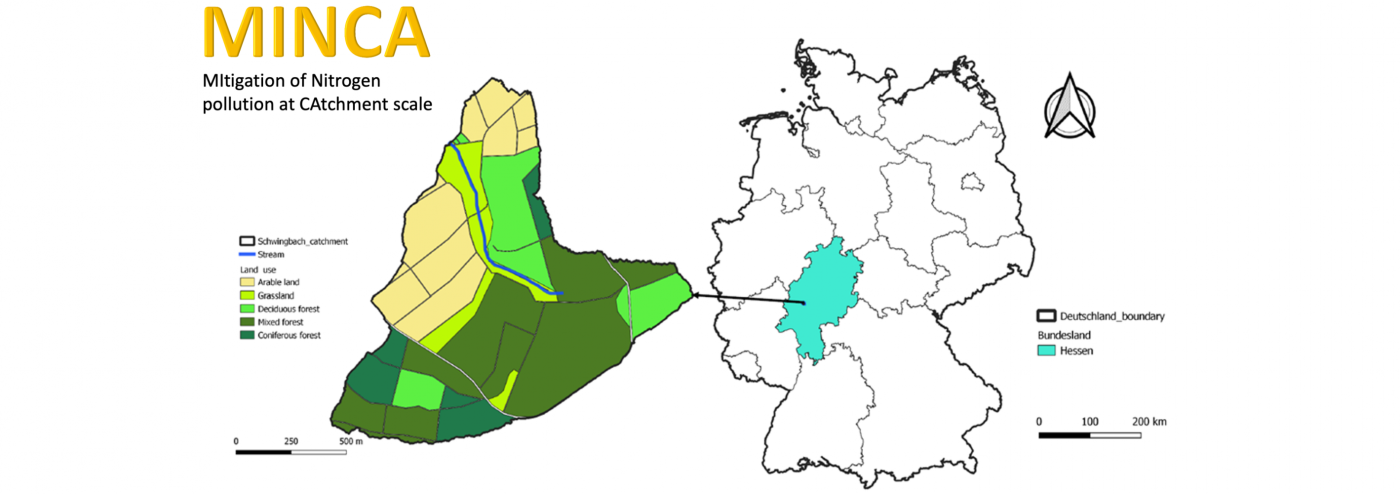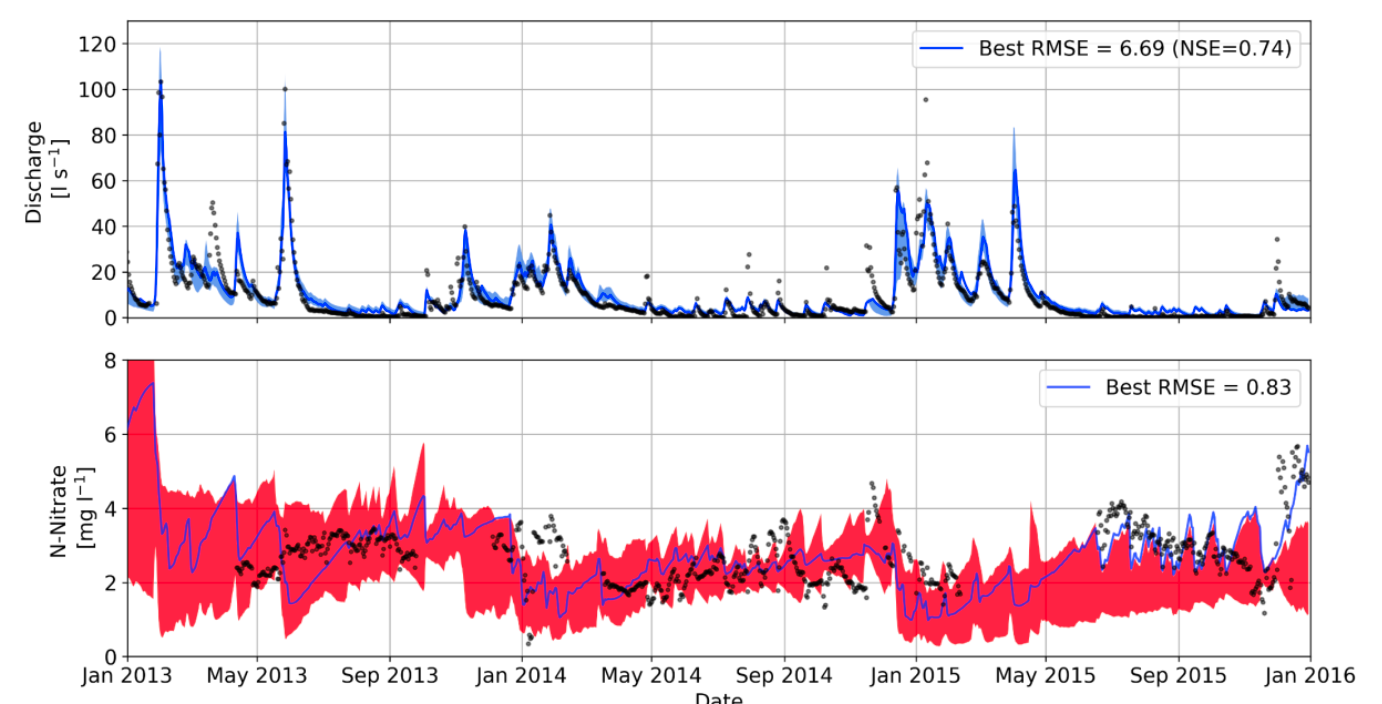
MINCA
MINCA: MItigation of Nitrogen pollution at CAtchment scale
Agriculture in Germany and worldwide is characterized by substantial nitrogen fertilizer surpluses with negative consequences for the environment:
- Eutrophication and pollution of surface water and groundwater bodies with NO3
- Greenhouse gas (GHG) emissions and climate warming due to emissions of N2O
- Elevated tropospheric O3 and particle concentrations due to emissions of NOX and NH3
There is an increasing need of products and services aiming at an environmentally friendly use of fertilizers, which should result in improved nitrogen use efficiency and therewith a reduction of reactive nitrogen losses.
The DFG-funded project MINCA aims at a comprehensive assessment of reactive nitrogen loss pathways at site and catchment scale and the development of suitable mitigation strategies using field observations and hydro-biogeochemical process modelling. The project’s study area is the Schwingbach, a small creek in a low mountainous, agriculturally developed landscape in Hessen, Germany. The project builds upon an already established monitoring network of water, carbon and nitrogen fluxes that has been running since 2010 and which is further enhanced by complementary field measurements of, e.g., greenhouse gases within the project. The ecosystem model LandscapeDNDC and the hydrological model CMF are applied for the project’s goal:
the establishment of process models as tools to identify field management strategies that allow optimizing crop nitrogen use efficiency while mitigating environmental reactive nitrogen losses in agricultural dominated landscapes.

Funding:
Funded by German Research Foundation (DFG)
Funding period: 2019 – 2022
Contact:
Dr. David Kraus (KIT IMK-IFU)
Elizabeth Wangari Gachibu (KIT IMK-IFU)
Dr. Tobias Houska (JL University Giessen)
Cooperation:
Department of Landscape Ecology and Resources Management, Justus-Liebig University, Gießen
Publications:
Houska, T., Kraft, P., Jehn, F. U., Bestian, K., Kraus, D., and Breuer, L.: Detection of hidden model errors by combining single and multi-criteria calibration, Science of The Total Environment, 777, 146218, doi:10.1016/j.scitotenv.2021.146218, 2021.